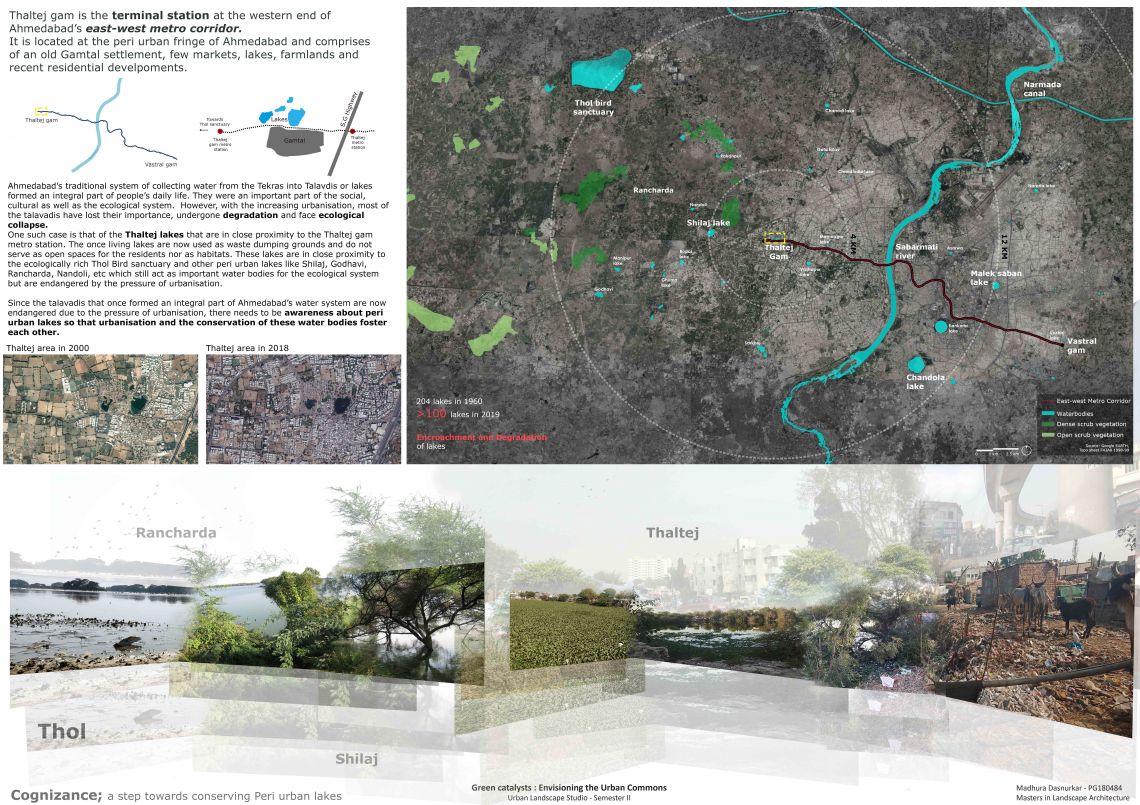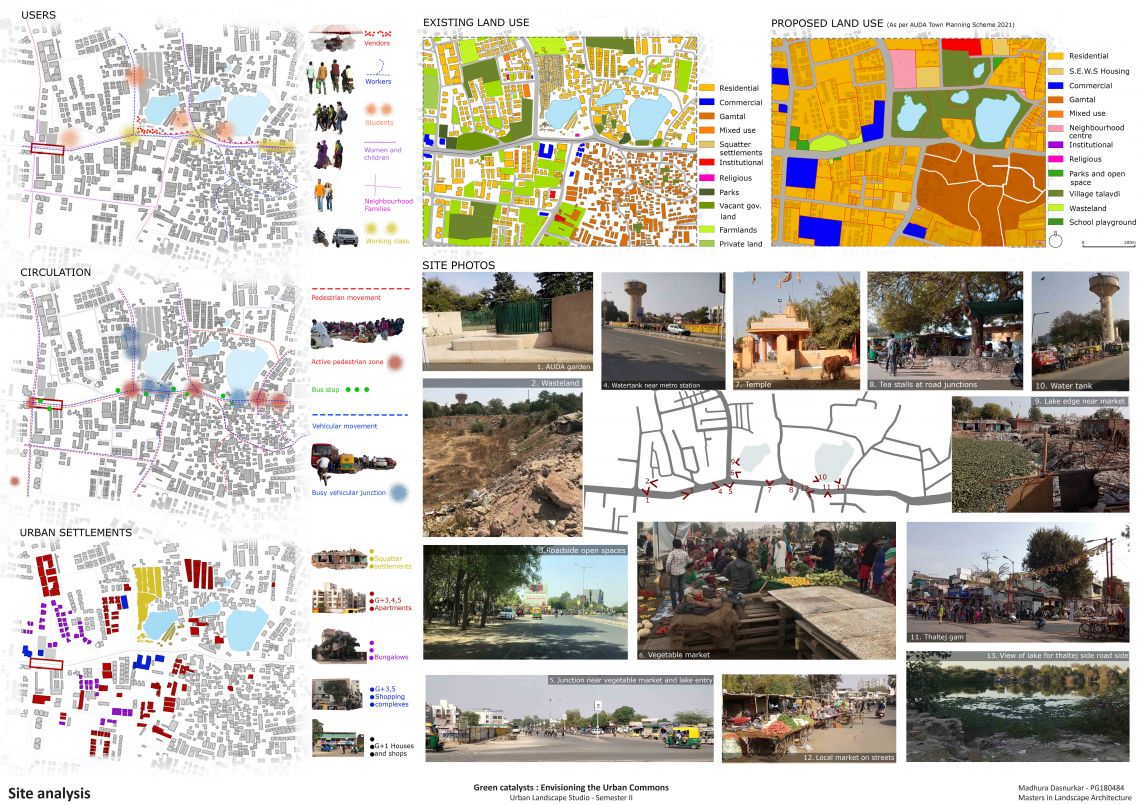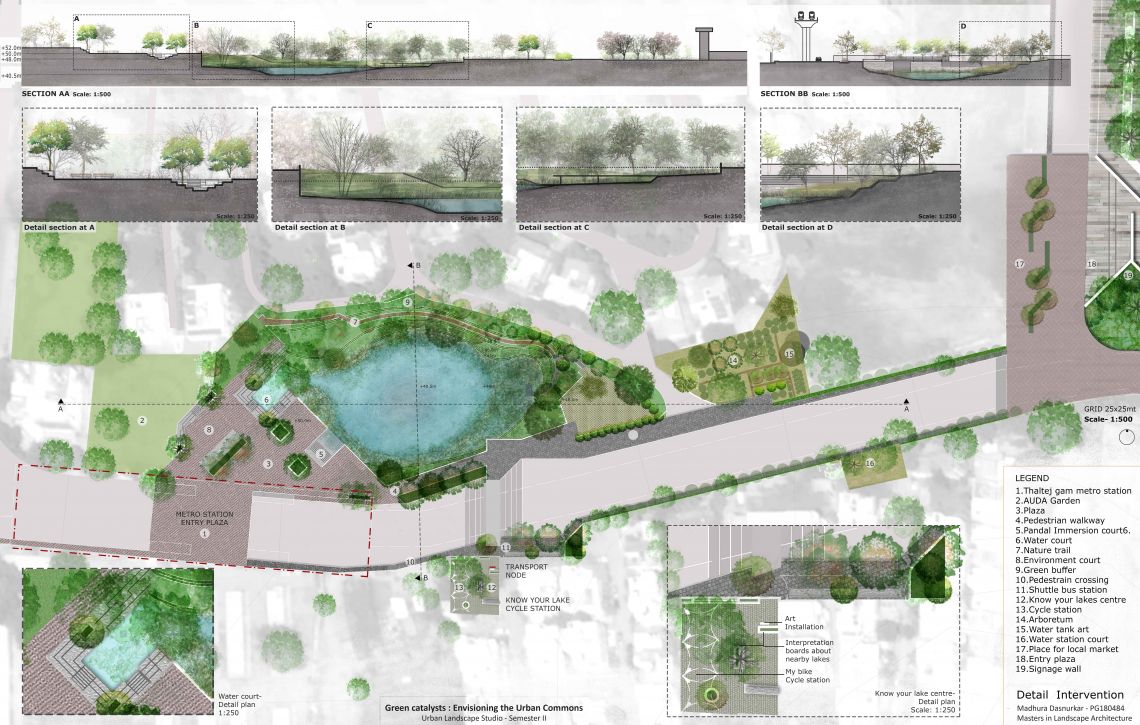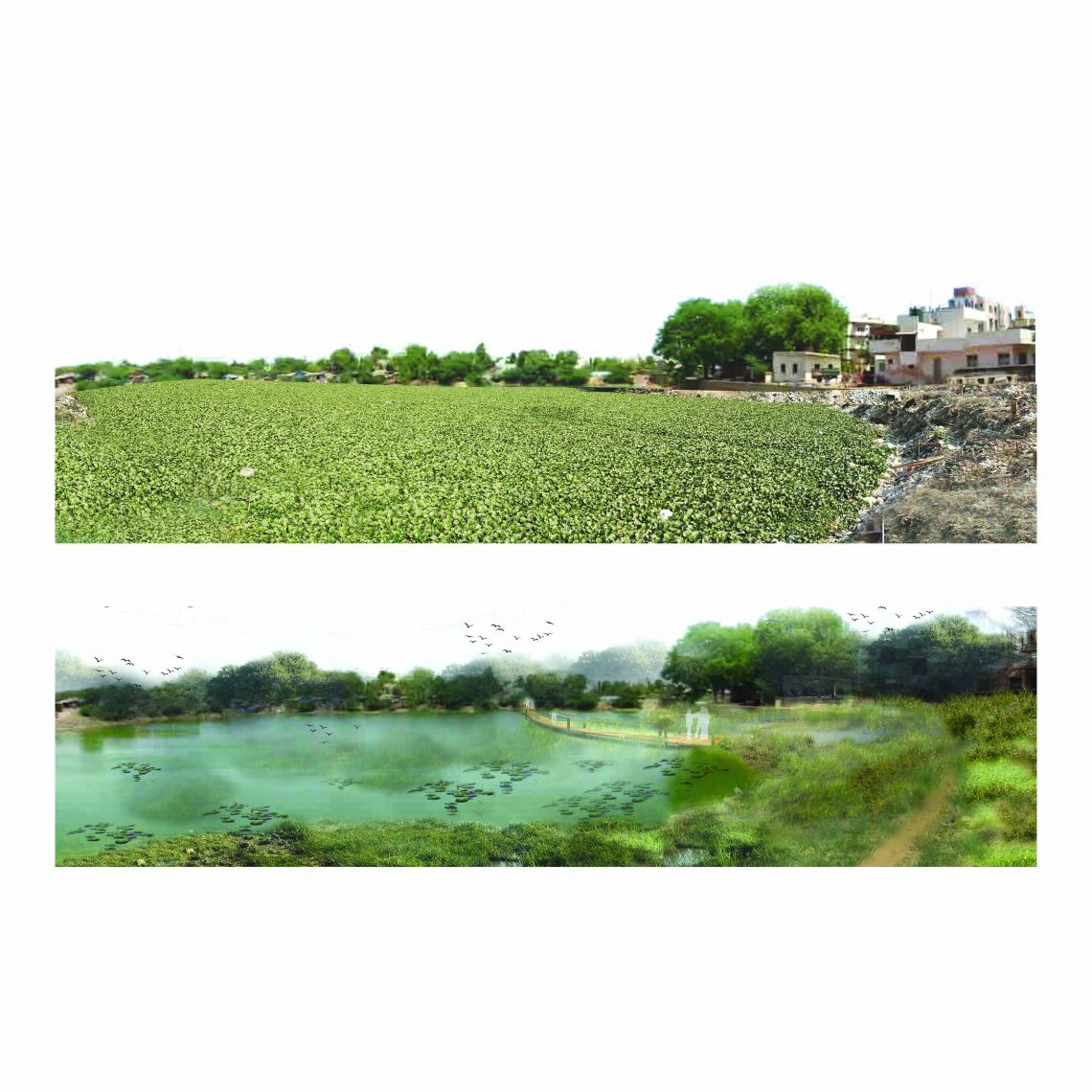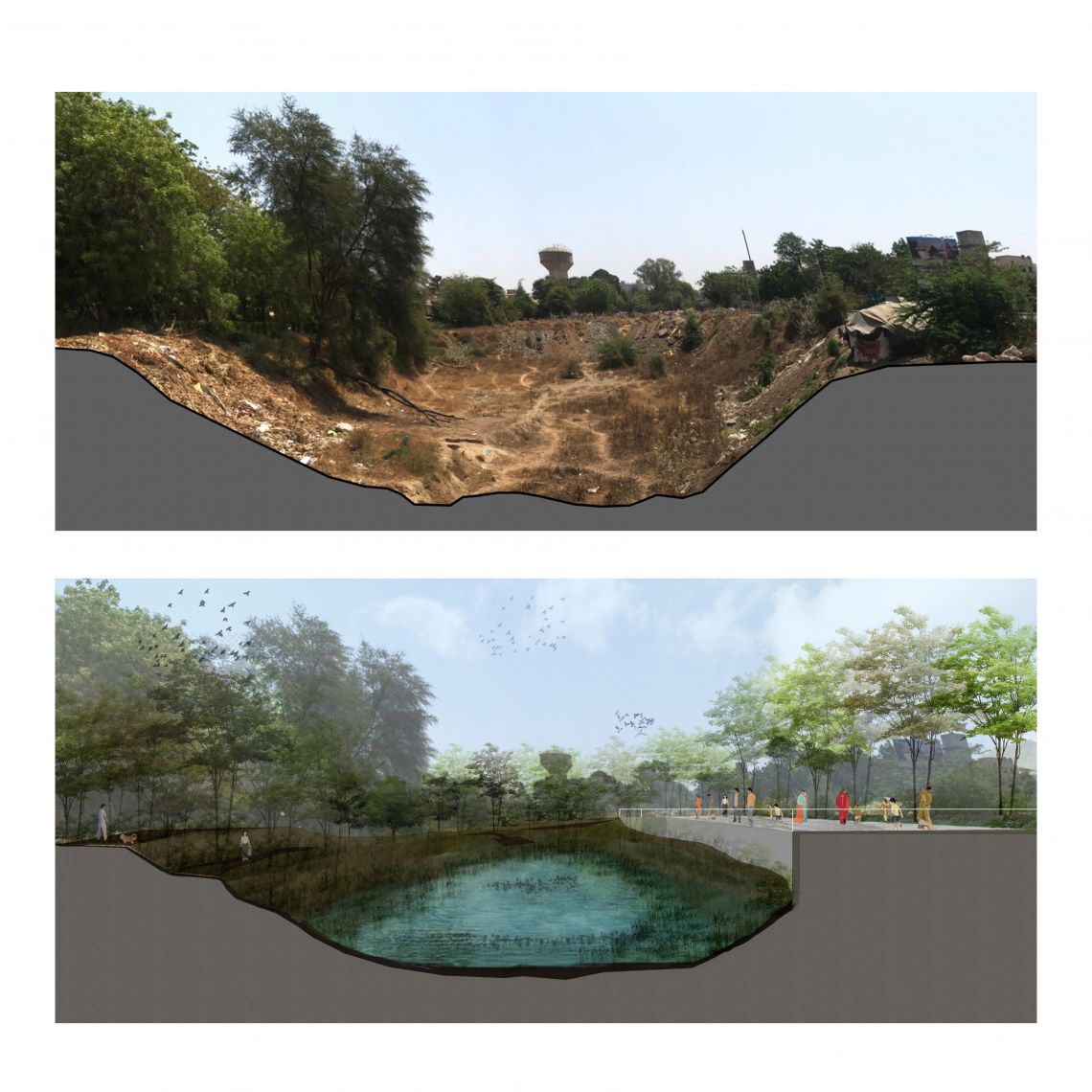Your browser is out-of-date!
For a richer surfing experience on our website, please update your browser. Update my browser now!
For a richer surfing experience on our website, please update your browser. Update my browser now!
In 1960, Ahmedabad had at least 207 lakes which have reduced to just 137 now. With the increasing urbanisation, most of the lakes have lost their importance, undergone degradation and face ecological collapse. One such case is that of the Thaltej lakes which are in close proximity to the Thaltej gam metro station. Thaltej lakes that were once an important part of the society, now are in a state of ecological damage and ignorance. The lakes flood into the surrounding areas during monsoons and are used as a dumping ground, thus not holding any ecological or social value. Ecological restoration of the lake and developing it as a destination that fosters urban habitats, caters to neighbourhood activities and educates visitors about lake ecosystem will revive the lakes and redevelop their importance in the society. Using detailed understanding of history, topography, surface drainage patterns, ecology, local land use, activities and the transport corridor, Thaltej Gam is reimagined such that it encourages bio-diversity, and serves as parks, markets, groves, wetlands, urban interpretation centre becoming a thread that is continually traversed on foot and cycle. It acts as a transit hub, wetland habitat that regulates flooding, provides a platform for environmental issues, and reconnects people with water. On a masterplan level, the proposal restores the lakes through hydrological planning, raises awareness through interpretation centres and facilitates connections with other peri-urban lakes. The design solutions include use of simple cut and fill techniques to create a series of community tekras and lakes with minimal intervention and large area left alone for natural evolution such that it provides a stormwater filtering and cleansing buffer zone for the lakes. The detail level design demonstrates a transit oriented approach to urban open space design. It integrates different levels of transit, provides spillover places for the large influx of people from the terminal station and educates people about lake ecosystems through interpretation zones. A network of green paths leads people from the metro station to the lakes. It allows the visitors to experience the setting of the nearby Thol lake sanctuary through its dense forest settings and platforms to view the lakes, allowing them to have an immediate touch of nature within the dense urban setting.
